Anyone else experiencing the fun that is discovering wiggly squigglies all over you as you walk under the trees in spring? This weekend, my husband called to me to observe the oddity that decided to visit his T-shirt while he worked outside.
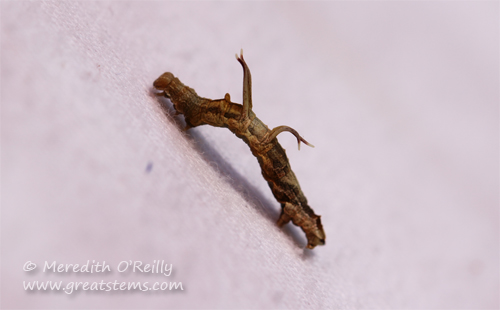
Most of us are well familiar with inchworms. Some are green or brown or mixed colors, some look like twigs, and so on. This was the first time I’d seen one with filaments, and that warranted a photo opportunity.
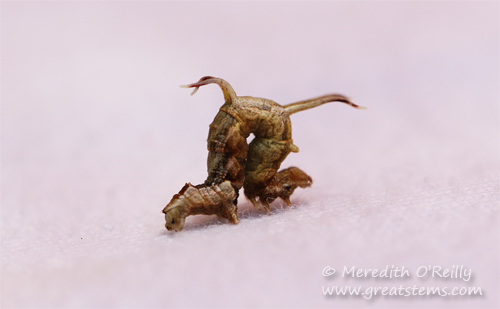 As near as I can tell, this inchworm is one of just a few species that have filaments — in the United States, there are primarily three recognized species. Ours appears to be Nematocampa resistaria, or Horned Spanworm Moth.
As near as I can tell, this inchworm is one of just a few species that have filaments — in the United States, there are primarily three recognized species. Ours appears to be Nematocampa resistaria, or Horned Spanworm Moth.
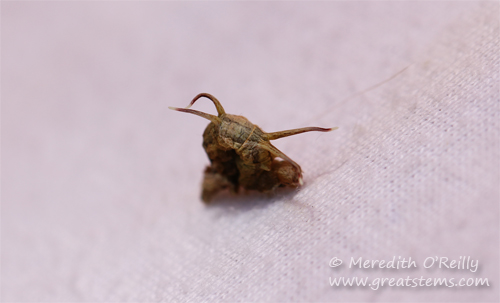
Some people feel the filaments help the inchworm mimic a dead flower with stamens, but as I watched the inchworm do its inching along, I was reminded of a spider. Do you see it? Frankly, I’m going with it — if you were a caterpillar, wouldn’t you rather wear the costume of a predator and keep some would-be foes away?
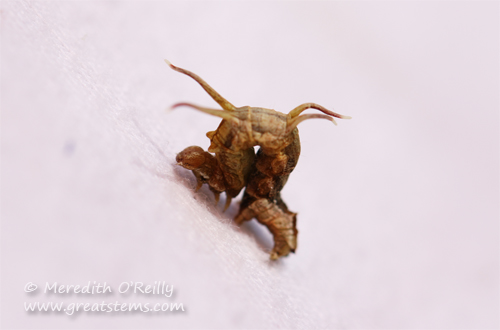 The length of the pale-tipped filaments on our little inchworm indicate that it was actually a little concerned by our presence (not that we were the ones invading its space this time, mind you — it was the other way around!). When relaxed, the inchworm’s filaments aren’t quite as long. When alarmed, it pumps hemolymph into them, which extends them — like spider legs, oooOOOoooh.
The length of the pale-tipped filaments on our little inchworm indicate that it was actually a little concerned by our presence (not that we were the ones invading its space this time, mind you — it was the other way around!). When relaxed, the inchworm’s filaments aren’t quite as long. When alarmed, it pumps hemolymph into them, which extends them — like spider legs, oooOOOoooh.
Horned Spanworms eat the foliage of a variety of hardwood and softwood trees. I suspect it started out on one of our cedar elm trees. Click the link above to see pics of the moth it will become — quite a pretty little thing.
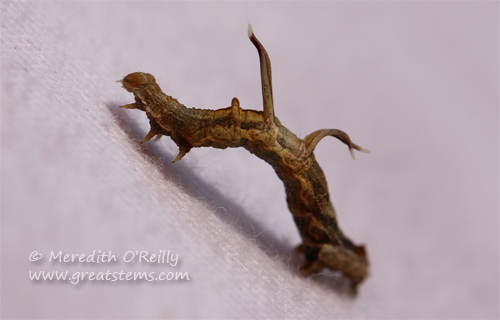 Remember, these little guys and other caterpillars have an important role in the ecosystem as food sources for birds and other animals — don’t squish them!
Remember, these little guys and other caterpillars have an important role in the ecosystem as food sources for birds and other animals — don’t squish them!
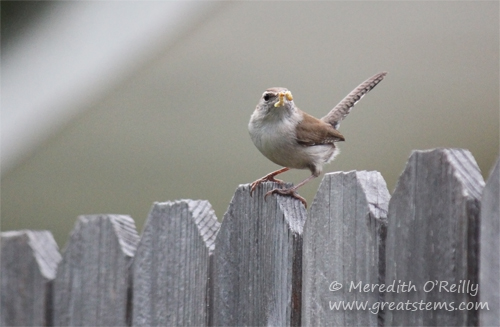
It just so happens that yesterday I captured this picture of a Mama (or Papa?) Carolina Wren bringing an inchworm to her babies. It’s not the same inchworm, I promise — see, this one is yellow!
I love these kind of discoveries in the garden! What a cool looking inchworm!
Isn’t it though? It amazes me I’d never seen one before.
Nice discovery, and beautiful photos!
I think I’m leaning more toward it trying to resemble flower parts rather than spiders, because birds eat spiders as readily as they do inchworms, right? 🙂
Well, some birds eat flower parts, too. But I guess I was thinking that maybe spiders and robber flies and predatory stink bugs would leave it alone if it looked like a spider. But of course, I’m sure most predators wouldn’t be fooled.